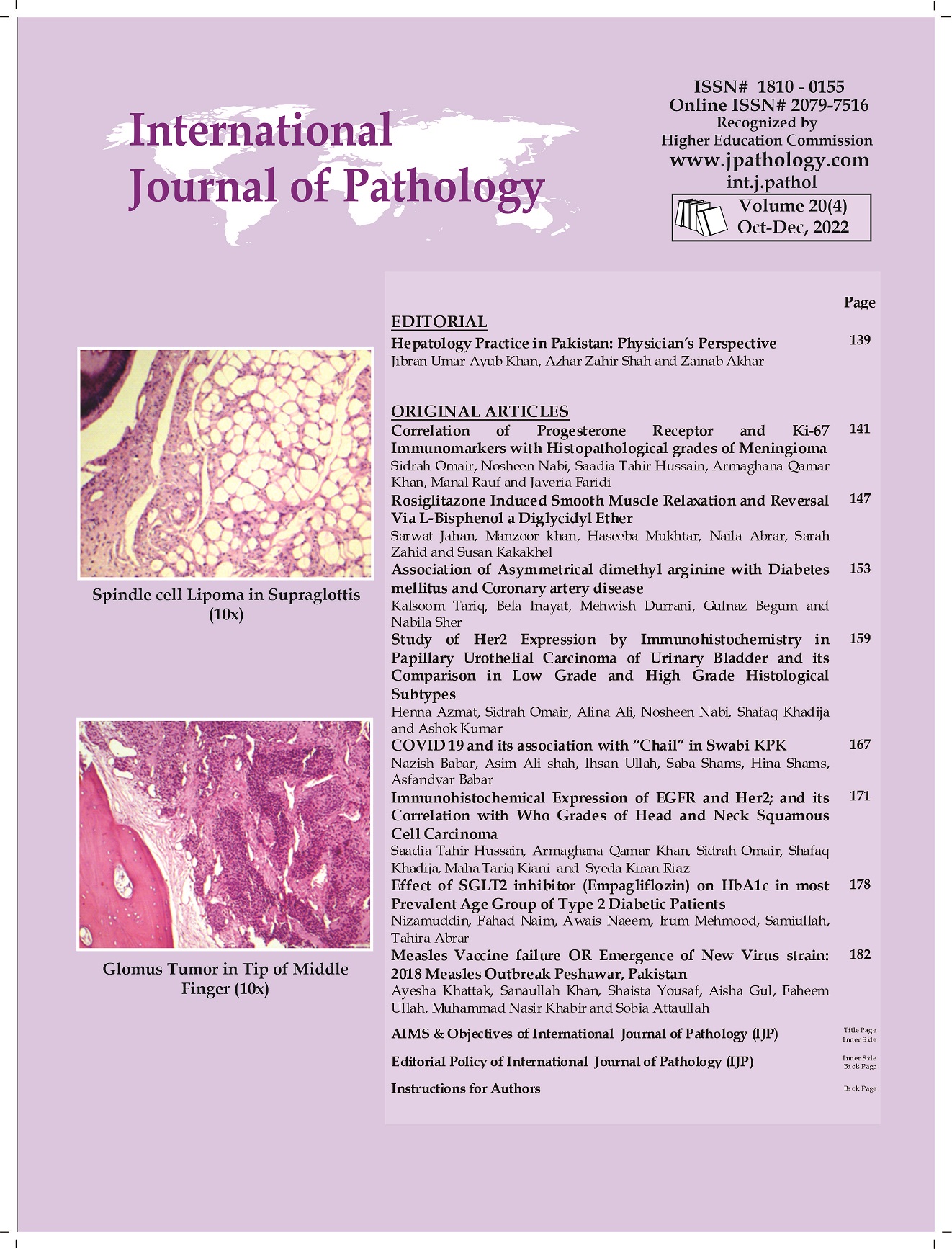COVID 19 and its association with “Chail” in Swabi KPK
Keywords:
COVID-19, Veil, Fabric masks, Infectious diseases, Personal protection, Polymerase Chain ReactionAbstract
Back ground: The dotted chaddar ‘Chail’ worn by women in Swabi district, a symbol of respect, to fully cover the whole body and their faces as a veil or niqab, can also be a source of reduction in the transmission of covid-19 in females
Objective: To determine the frequency of COVID-19 in Swabi, in relation to the custom of wearing a “chail”.
Methodology: It was a retrospectively conducted, descriptive, cross-sectional analysis. It was conducted in department of Pathology (Microbiology/Virology), Bacha Khan Medical Complex, Swabi from June, 2020 to May, 2022, after obtaining permission from ethical review board of the institute .Samples from all the suspected cases, their contacts, and healthcare workers with COVID-19 symptoms were sent to Virology section of Pathology Laboratory located at Bacha Khan Medical Complex, Swabi. Preferably nasopharyngeal and in some cases oropharyngeal swabs were taken. All these samples were then subjected to be tested for SARS-CoV-2 by quantitative reverse-transcription-polymerase chain reaction (RT-PCR) to be reported either as, detected, (positive) OR, not detected, (negative).
Results: A total of 87632, nasopharyngeal /oropharyngeal samples were collected over a period of 24 months duration. Detection of COVID-19 using the Real time Polymerase chain reaction i.e. RT-PCR was carried out that yielded that out of the total of 87632 cases, 5716 (6.5%) were positive and 81554 (93.4%) were found to be negative. Out of the total number of positive cases i.e. 5716, a total of 4424 (77.4%) were males and 1286 (22.5 %) were females. Majority of the patients whether males or females were adults ranging from 19 years of age to 56 years of age.
Conclusion: The frequency of COVID-19 was higher in males than in females indicating the importance of “chail” playing a significant role in the prevention of COVID-19
Downloads
Published
Issue
Section
License
Copyright (c) 2023 Nazish Babar; Asim Ali Shah, Ihsan Ullah, Saba Shams, Hina Shams, Asfandyar Babar

This work is licensed under a Creative Commons Attribution-NonCommercial 4.0 International License.
Readers may “Share-copy and redistribute the material in any medium or format” and “Adapt-remix, transform, and build upon the material”. The readers must give appropriate credit to the source of the material and indicate if changes were made to the material. Readers may not use the material for commercial purpose. The readers may not apply legal terms or technological measures that legally restrict others from doing anything the license permits.


